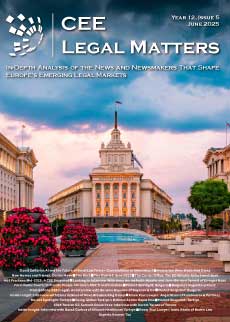Guidance No. 12/2018 (II.27) of the Hungarian National Bank entered into effect on July 1, 2018 (the “Guidance”). Although the Guidance is non-binding, financial institutions are expected to comply with its provisions. In this article, we provide a list of the most important points of the Guidance and predict market reactions based on our ongoing mandates and information obtained from our clients.
The Guidance makes clear that although the Hungarian National Bank (the HNB) is satisfied with the increased activity of the banks in real estate financing, it expects all lenders to be very cautious and selective with their projects. The memory of the vulnerability of the Hungarian banks at the time of Lehman’s fall is still deeply engraved in controllers’ minds and they do not want to deal with a similarly massive number of defaulted real estate projects again.
The Guidance sets forth a detailed checklist for quarterly reviews. The HNB informally communicated that in its view the banks have already been performing quarterly reviews, so the practice is only confirmed. While there is certainly much truth in this statement, the problem is that the HNB expects the principles reflected in the Guidance’s checklist to be applied in all projects – and while a detailed quarterly review is certainly best practice for most projects, that might not be true, for instance, for an office building with one or two tenants. Anyhow, the banks will include the relevant provisions of the Guidance among the information covenants in the facility agreements, so most of the administrative burden will be placed on the borrowers.
The HNB also expects the banks to apply three months’ debt service reserve account if the average debt service coverage is below 1.2. The entire market seems to agree that this is merely a codification of existing market practice, and this is a point that will not cause difficulties when structuring new deals.
Finally, the HNB expects everyone to apply a 25% cash-sweep if the total amortization period of a loan is longer than 20 years in the case of new office buildings and retail real estates, or more than 15 years in all other cases. This is the most-discussed and criticized provision of the Guidance, and many of our clients have already approached the HNB for clarification on this issue. While we wait for further communication in this respect, certain points are particularly problematic. Maybe the most important issue is that the Guidance does not define any methodology for calculating the total amortization period, which leaves room for insecurity and even “tricky” solutions. For instance, if the interest rate is not fixed, how can possible increases/decreases for the next 20 years be calculated? Will indexation of the leasing fees be included? How can vacant areas, short term lease agreements, and break options be calculated? Many questions and the answers are yet to come.
Also, no one knows what a “new office building” is. If this term only refers to real estate development, this means that a developer will obtain a loan with better conditions than an investor buying a recently finished, quasi-new building.
In certain ways, this provision of the Guidance may even be counter-productive and may result in banks losing their strongest clients, which is definitely not the aim of the HNB. In practice, only the strongest borrowers can request terms extending beyond the rules of the Guidance. Borrowers with a gigantic sponsor can afford to request a five-year grace period, low amortization for the entire term, or a super-long final maturity. Some say that such clients will now opt for cross-border financers, such as the Austrian mothers of Hungarian banks, which are not subject to the Guidance. This may result in a number of synthetic participation deals from the Hungarian side, or Hungarian banks otherwise funding their mother companies.
Notwithstanding all the above, until further clarification, there may be space for creative interpretations. The cash sweep mechanism may be simply priced in quarterly instalments: a lender expecting 4% amortization may only include 2% in the repayment schedule, with the rest to be paid under the cash-sweep. Also, bear in mind that there is only a best effort obligation to apply the Guidance in case of existing deals. This may mean extending the term instead of a refinancing, or increasing an existing facility in case of any top-up loans. The HNB will need to decide whether these practices comply with the Guidance.
By Erika Papp, Managing Partner, and Sandor Kovacs, Associate, CMS Hungary
This Article was originally published in Issue 5.8 of the CEE Legal Matters Magazine. If you would like to receive a hard copy of the magazine, you can subscribe here.




